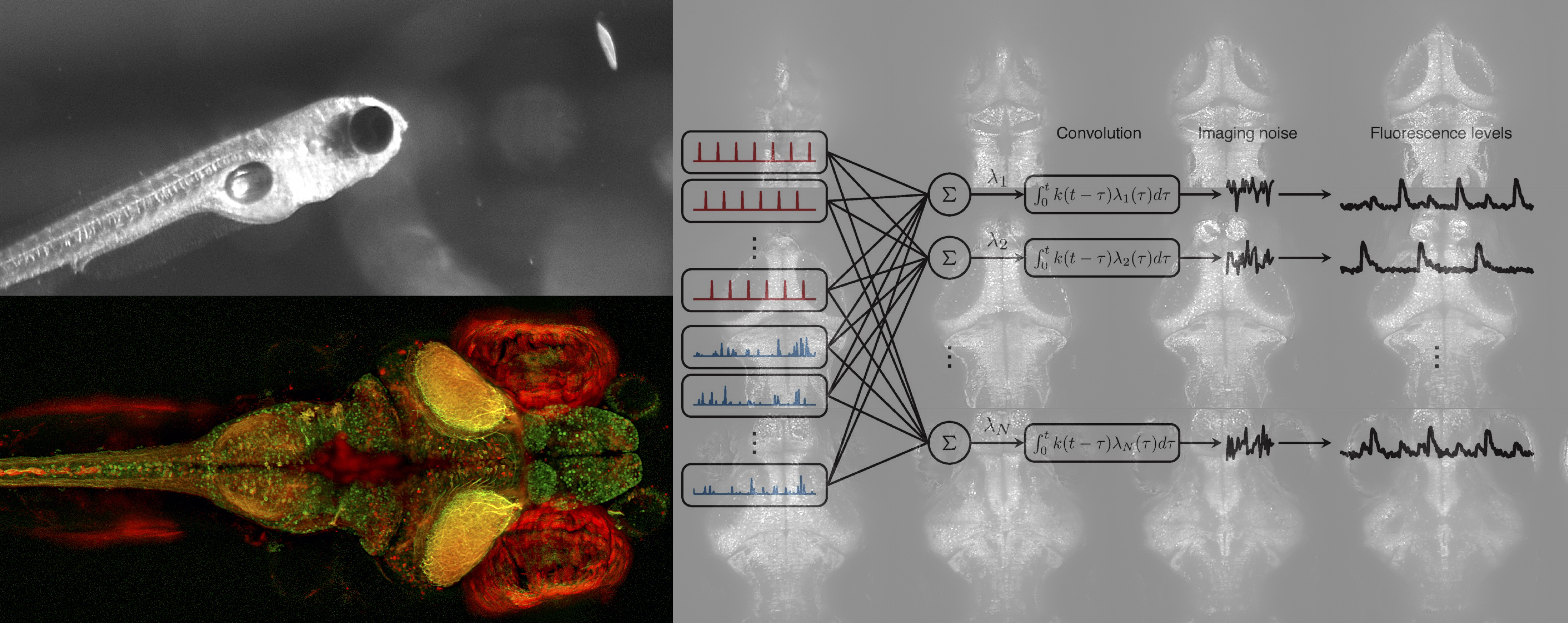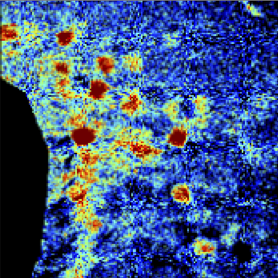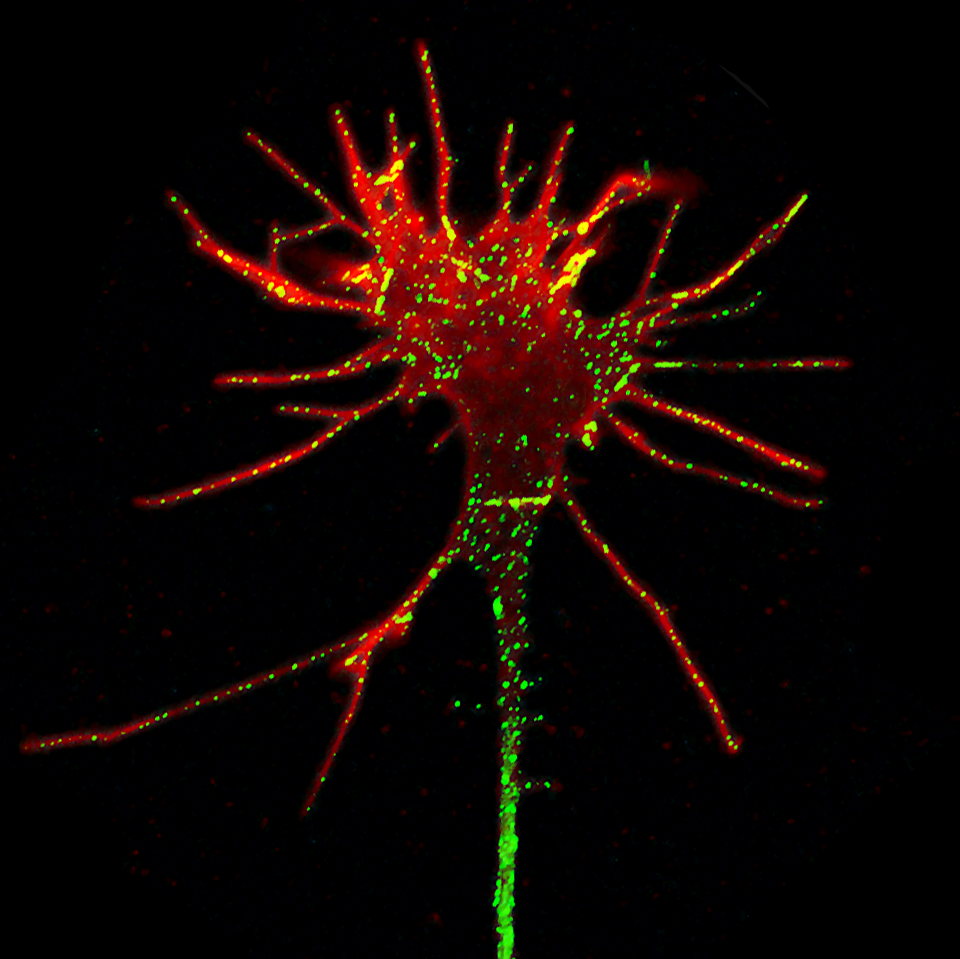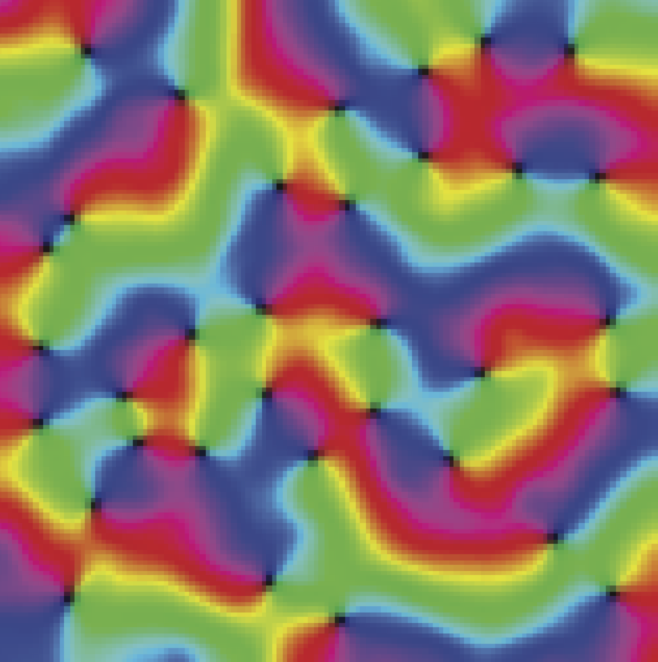Computational, Systems and Developmental Neuroscience

Maps in visual cortex
The primary visual cortex of animals such as cats, primates and humans contains maps of visual features such as eye preference and orientation preference. The development of these maps during early life is sensitive to the visual environment, and provides a window on general mechanisms of brain plasticity. We are studying the computational principles underlying the formation of these maps, and how best to analyze the relevant experimental data. Below is a summary of some of our work from the past few years.
- Pinwheel plasticity. Pinwheels in orientation maps have a characteristic spatial relationship to ocular dominance columns. Using a combination of theory and experiment we recently showed in a paper in ELife that this relationship is sensitive to visual experience, and thus not entirely hard-wired. This was a collaboration with Michael Ibbotson.
- Sparse coding with abnormal visual input. Sparse coding is a powerful computational principle which can explain receptive field development with normal visual input. We recently showed that it can also explain the receptive fields that develop under a wide range of abormal visual input (see Hunt et al, 2012 and Hunt et al, 2013). The latter was a collaboration with Peter Dayan.
- Gaussian Process methods for analyzing visual maps. Most experimental data on the structure of these feature maps comes from intrinsic signal optical imaging. Gaussian Processes are a Bayesian technique which provide a more statistically principled method for analyzing these data than standard vector averaging techniques. We recently showed that this could give new insight into the effect of stripe rearing on cat visual cortex (see Hughes et al 2014), a collaboration with Frank Sengpiel and Michael Ibbotson. More recently we have shown to extend Gaussian Process methods to analyse both orientation and ocular dominance maps (Hughes & Goodhill, 2017).
- Optimizing the representation of orientation maps. The standard HSV colour scheme for representing these maps can potentially be misleading. We have a proposed an alternative colour scheme based on HCL (see Hughes & Goodhill, 2015).
Some older papers
- Hunt, J.J., Bosking, W.H. & Goodhill, G.J. (2011). Statistical structure of lateral connections in the primary visual cortex. Neural Systems & Circuits, 1:3. PDF
- Giacomantonio, C.E., Ibbotson, M.R. & Goodhill, G.J. (2010). The influence of restricted orientation on map structure in primary visual cortex. Neuroimage, 52, 875-883. PDF
- Hunt, J.J., Giacomantonio, C.E., Tang, H., Mortimer, D., Jaffer, S.,Vorobyov, V., Ericksson, G., Sengpiel, F. & Goodhill, G.J. (2009). Natural scene statistics and the structure of orientation maps in the visual cortex. Neuroimage, 47, 157-172. PDF
- Giacomantonio, C.E. & Goodhill, G.J. (2007). The effect of angioscotomas on map structure in primary visual cortex. Journal of Neuroscience, 27, 4935-4946. PDF
- Goodhill, G.J. (2007). Contributions of theoretical modelling to the understanding of neural map development. Neuron, 56, 301-311. PDF



